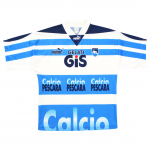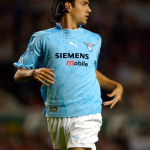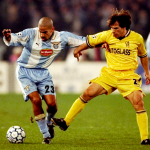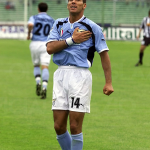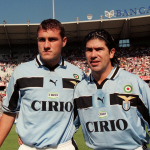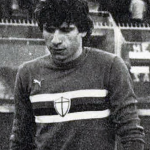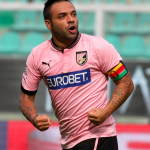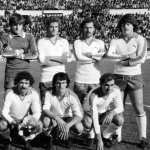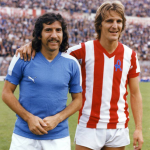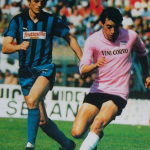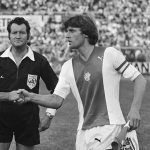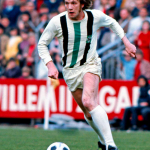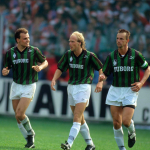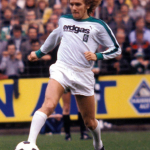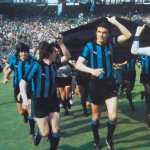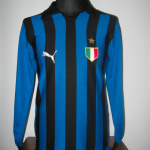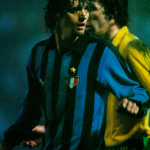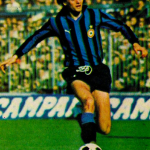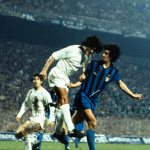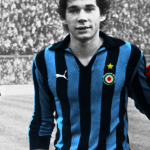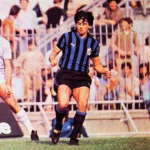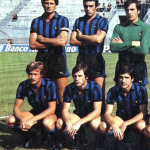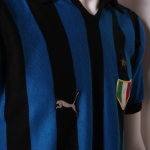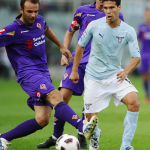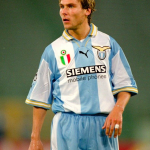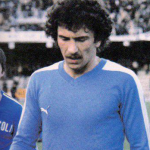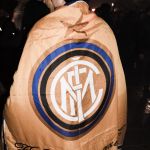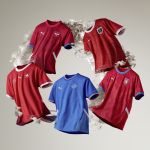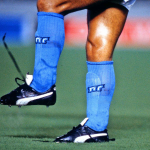
The first Italian team sponsored by PUMA
How the German brand arrived in Serie A
May 7th, 2021
After seeing the first Italian team sponsored by the brand of Adolf Dassler adidas, it's time to face the other part of the family and see the fate of the brand of Rudolf Dassler who founded PUMA in October 1948 after he created RUDA in January. - with the same naming mechanism as the brother. As with adidas, PUMA also enters the sports market through shoes and in the first 30 years of history it will do so thanks to champions and legends who have remained in history: whether it is Heinz Fütterer, Armin Hary or Jesse Owens on an athletics track, who whether it is Pelé, Eusebio or Maradona on a football pitch, whether it is Walt "Clyde" Frazier on the MSG parquet court, whether it is Guillermo Vilas, Boris Becker and Martina Navrátilová on grass or clay or Tommie Smith and John Carlos for the history, PUMA has always been at the feet of great sports figures.
The debut in the world of football came with ATOM in the late 1950s, when West German national team Herbert Burdenski scored the winning goal in the first post-war football match. The jerseys will not arrive immediately, but among the first teams to have PUMA as technical sponsor there will be Borussia Mönchengladbach which officially begins the first form of sponsorship in 1976, but already in '67 the relationship between the club and the brand was very close.
After having depopulated at the feet of Pele and Eusebio in the 1962 World Cup in Chile and in the 1966 World Cup in Germany, PUMA also enters the world of soccer jerseys and obviously does so by playing at home. In 1977 the journey that takes the brand outside the German borders begins and, after a first tour of Amsterdam on the Ajax side, the moment of Italy arrives. The historical situation of Italian football in terms of sponsorship was in full swing and, after the right to exploit their image for commercial purposes in 1974, the FIGC created Promocalcio, an internal body that since 1978 he would handle the marketing and television rights issues. At the turn of 1977 and 1978, the definitive green light came to show the technical suppliers' brands on the jerseys.
It will be the 1977-78 season - won by Juventus - the first with visible supplier kit crests. The first team to show the PUMA logo was the Inter Milan of Spillo Altobelli, Lele Oriali, a young Beppe Baresi and captain Giacinto Facchetti. Although not very visible due to the choice to use dark green on the vertical stripes of the Nerazzurri, PUMA will be the first "visible" sponsor of Inter Milan. In the following season, Avellino and Napoli will be added, while in the 1980-81 vintage PUMA will also be on the Pistoiese shirt. From 1981 to 1995, the brand will not be present in Serie A - except for Pisa in 1982-83 - but far from the top flight it will be in great demand: Genoa (1978-80 in B), Cremonese (1982-89 in B and in C), Sampdoria (1979-80 in B), Atalanta (1981-84 in B and in C), Bari (1978-79 in B) and Lecce (1978-80 in B) will all wear PUMA.
The return to Serie A will be on the Parma shirt (from 1995 to 1998), before opening the very long cycle with Lazio that will last 14 seasons from 1998 to 2012. At the turn of the 90's and the beginning of new millennium also Catania (in Serie C1 and C2), Fiorentina (in the last segment of 2003), Palermo (from 2012 to 2014) and even Perugia in Serie D after the failure of the Gaucci project. After the year of Palermo, PUMA disappears from Serie A for five seasons until the new sponsorship with AC Milan, repeated by the agreement reached this season with Sassuolo.







